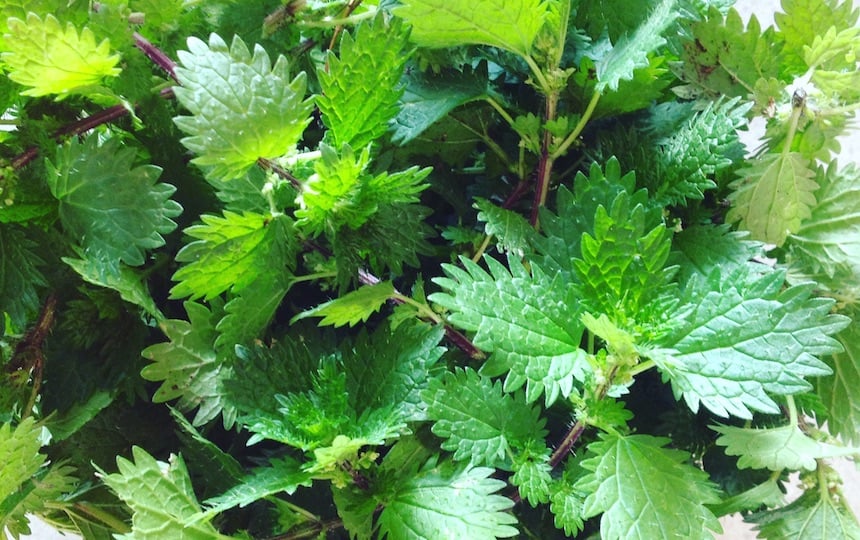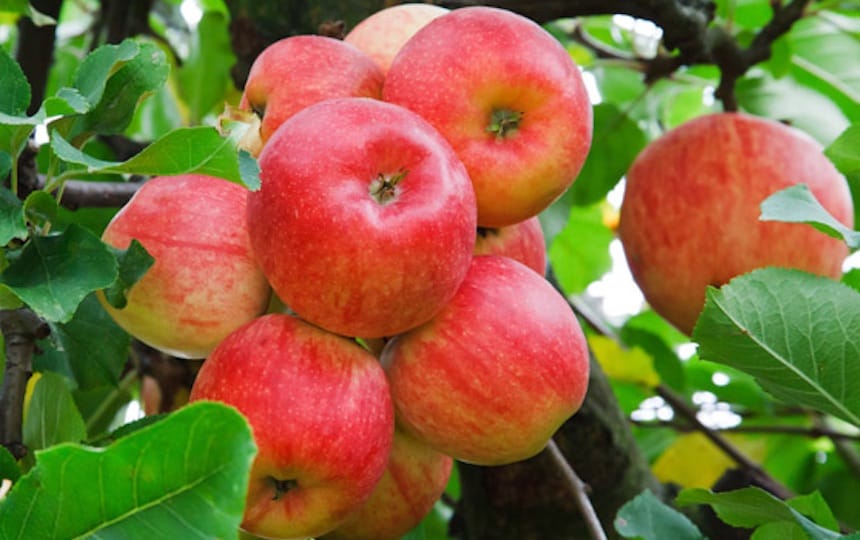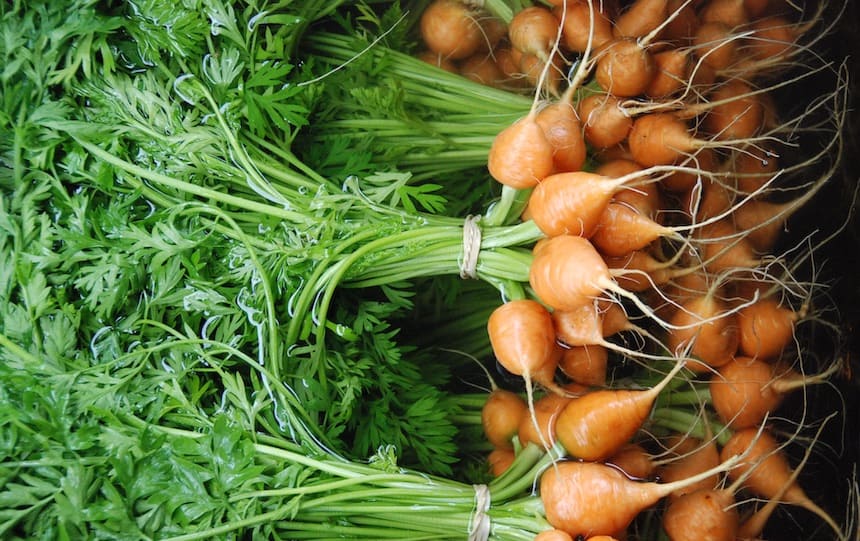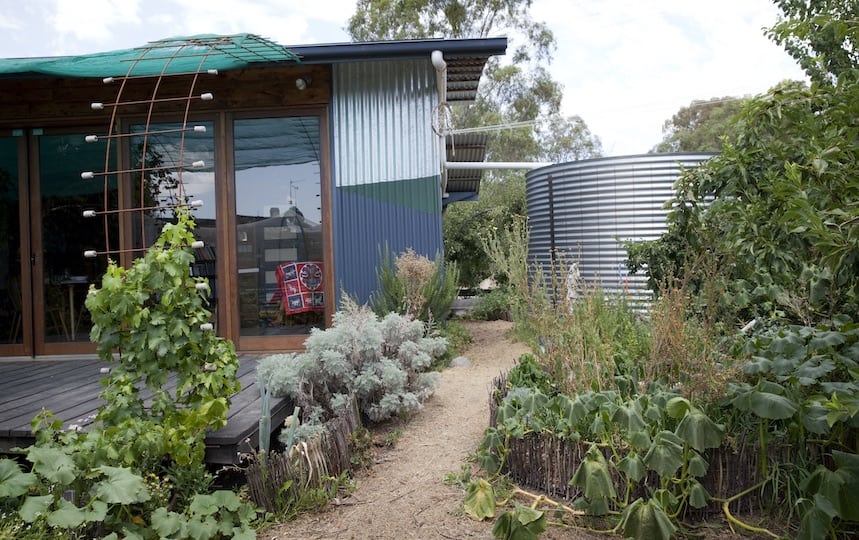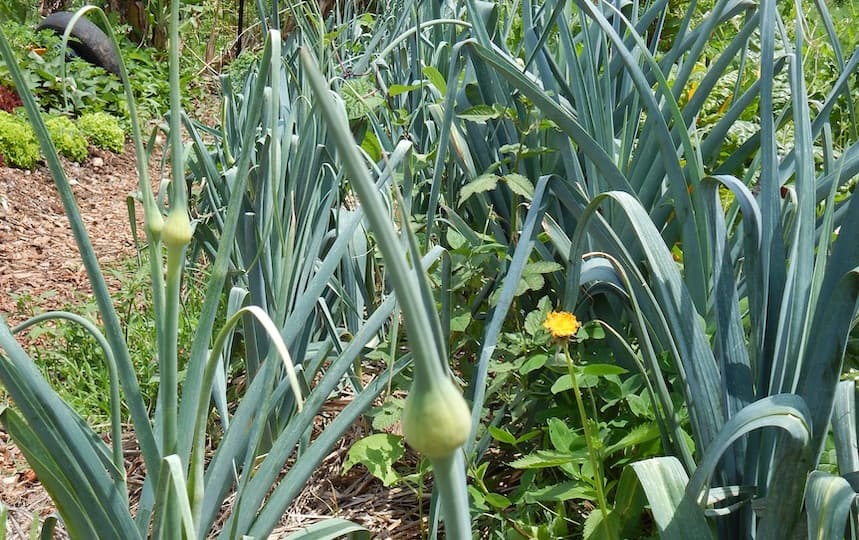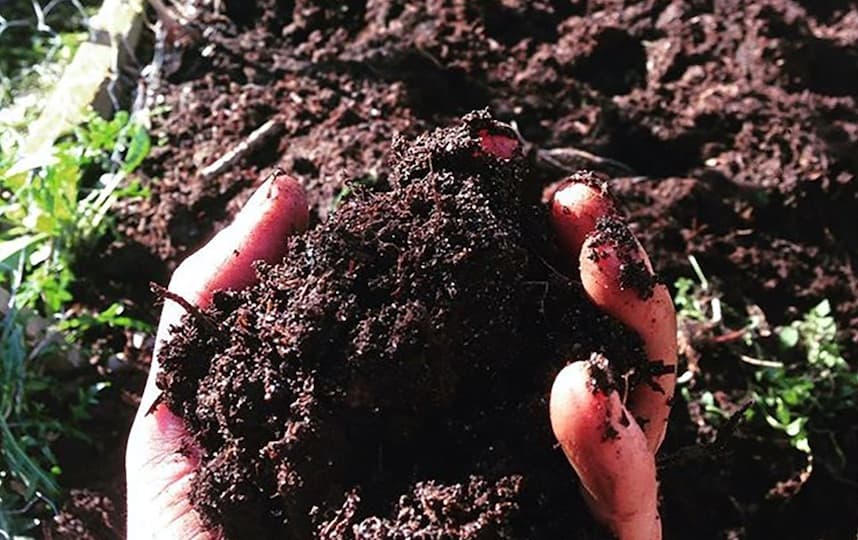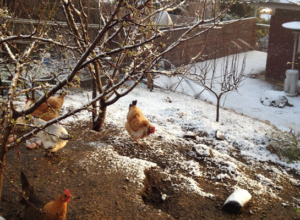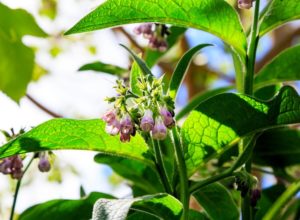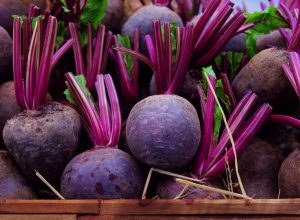Our August Garden Guides are here with all you need to know about what to do in your garden this time of year, depending on which climate zone you’re in.
Cool Temperate August Garden Guide
by Christina Giudici of FIMBY
What to plant?
Potatoes, peas, broad beans, Jerusalem artichokes, rhubarb divisions, chive divisions, oca (a tuberous oxalis relative that grows like a potato). And all the leafy greens: lettuce, rocket, Asian greens, celery and English spinach.
In raised beds and warm spots start with succession sowings of carrot and beetroot, and turnips if you must!
You can plant seedlings of brassicas such as cauliflower, cabbage, broccoli – they will grow okay, but I much prefer to plant them in autumn and be eating them now. If they grow into the warm weather of summer they can taste flabby and acrid.
Maintenance
Keep your garlic and other onion family plants weeded: the slim leaves don’t compete well with swamping layers of chickweed, stickyweed or other weeds that will start to grow fast now that the days are lengthening.
Finish winter pruning of apple and pear trees. Your pruned branches might be useful as pea sticks, to support new plantings of bush peas or even climbing peas if your pruned branches are tall enough for a tepee.
Pests and disease
If you’re inclined to spray for curly leaf or other fungal diseases, check your schedule. The stonefruit are beginning to flower, especially almonds, nectarines and Japanese plums.
Many spray regimes suggest an application at “bud swell”. I don’t spray, but rather try to grow vigorous and resilient trees. If a particular one is always succumbing to problems, it gets replaced with something hardier.
Harvest and preserve
- Citrus are coming on strong. Pick a few days before you use them if you can, they get juicier.
- Asparagus spears are emerging! Snap or cut them close to the soil surface.
- Brassicas are still producing the bulk of our winter veg intake: brussel sprouts (delicious roasted with some oil and salt), broccoli, cauliflower and cabbage, kohl rabi and kale.
Permaculture Principle #8: Integrate rather than segregate
We raise meat rabbits and chickens (for eggs) in our suburban backyard, and have a small orchard with apples, plums, and pear trees.
Although each of these elements have their own needs, over time we have found ways to integrate them more and more so that one element’s outputs become the next element’s inputs. Here’s how:
The rabbits live in a sheltered run with a deep litter of grass hay, which builds up as they are given a fresh ration daily. It catches their wee and poo, and once a month or so we rake it all out and dump it a few metres away in the orchard.The chooks roam the orchard – we have put high netting around the outside to stop them flying out (as they used to do!). They immediately get to work spreading the rabbit litter around. The orchard is on a slope, so after a week or so much of the litter has migrated to the lower section thanks to the constant scratching by the chooks. They eat any grass seeds or germinating seedlings too.
The rabbit litter has a second life as an absorption pad for the chook poo – they can poop out up to half a cubic metre a year each! There is a deep layer of mixed hay, chook poo, rabbit poo and worm castings (made in situ) over the whole orchard. If I ever want to round up stray chooks, I just get out the big old three pronged hoe, and start scratching deeply in the litter. It’s full of worms, and the chooks know it!
The chooks occasionally do hygiene duty in the rabbit run, snaffling up spiders and moths, stray rabbit pellets and seeds from the hay. I supervise this now after one curious chook was bitten on the comb by our feistiest rabbit (chook combs bleed like crazy). The girls also clean up fallen fruit, codling moth larvae, and grass around the fruit trees. Any newly planted trees have a border of rocks around their root zone to protect them from scratching while they establish. The older trees are fine, specially with the deep layer of composting litter on the surface.
About twice a year I shovel up the rabbit litter/chook poo catching/compost forming layer from the deepest (lowest) section of the orchard. I barrow this to a compost area in the orchard, or to one in the veggie patch area at the front of the house. Layer it up, water if dry, and we have beautiful compost in a short while.
Mediterranean August Garden Guide
by Nadja Osterstock of Nadja’s Garden
Harvesting
Carrots and beetroot are fattening up nicely with all the rain we’ve had this month. Some of the citrus are now so juicy that their flavour is not as intense as usual, so a few extra herbs in a juice blend help to make up the zing factor.
Parsley, silverbeet and spinach are producing in abundance, and nasturtium leaves can also provide the peppery element in a salad. Brassicas such as cabbage and broccoli will be doing well if you have kept up with their feeding requirements and protected them from cabbage moths.
Watch out for broccoli heads forming and don’t be tempted to leave them too long as they can flower suddenly if there are a couple of sunny days. Cut off and use the main head and then watch for side shoots for your next harvest. Keep checking peas and picking daily to maintain production.
Planting
While peas, broad beans and leafy greens can still be planted out in the garden, it’s also time to start thinking about sowing spring vegetables indoors or in a warm, sheltered location, ready for planting out from September.
Solanum crops (tomatoes, capsicums, eggplants, chillies) need extra soil warmth to germinate, so use a heat pad or the top of a water heater to help them get started in their punnets or trays.
Wait until the garden soil has warmed enough to pass the “bare bum test” before planting seedlings out. If this takes a long time you might need to pot them up a couple of times while you wait – more on this next month.
Deciduous fruit and nut trees can still be planted out this month – get them in before their buds burst.
Maintenance
Grapevines can be pruned now that they are dormant. If they are seedless grapes, generally prune back most of the canes to 6-10 buds (nodes) to produce the coming summer’s fruit. Seeded grapes can be cut back harder (2-3 buds).
Remove excess canes in between those being kept, and tie up canes as required to keep them tidy and well supported.
Featured Permaculture principle #8: Integrate rather than segregate
If we look at the home garden as a small ecosystem, it becomes obvious that all the elements must be connected in some way – either by design or happy accident.
Designing to maximise connections and ensure that they are beneficial saves time and effort in the long run.
One of my garden beds (a circle of about four cubic metres) includes a mulberry tree, a baby mango tree and guava bush, a patch of rainbow chard, a potted curry bush, various salvias, geraniums, echeverias, some cuttings of the native shrub Templetonia retusa (cocky’s tongue), and a compost bin.
This probably sounds like a random assortment, but here are some of the functions that they serve for one another. The mulberry tree shades the others in summer and then drops its leaves for mulch. The succulent echeverias and the salvias protect the border to keep foot traffic off the bed and prevent compaction of the clay soil around tree roots.
The flowers attract bees and other insects for pollination and pest control. The curry bush confuses pest insects. The geraniums and compost bin provide a windbreak and sun trap to nurture the mango along.
The compost bin will also add a bit of winter warmth as the compost breaks down, will gradually feed the trees as worms carry the nutrients down into the soil, and will shade the mango tree from the west in summer when the late afternoon sun is fierce.
The rainbow chard brings me foraging in this bed for dinner, which reminds me to check on the other plants there.
Subtropical August Garden Guide
by Morag Gamble of Our Permaculture Life
I love this time of year in the subtropics — chilly nights with the fire on and warm sunny days that are even good enough for a beach visit.
The grass and weeds have stopped growing so much, so we have a short reprieve before the wonderfully abundant growth begins again. I can almost feel that bursting potential just waiting for the warmth and rain.
What to plant
So as we are heading into Spring, there’s a big list of plants that are good to plant now such as: beans, beetroot, bok choy and pak choy, cucumber, rggplant, kohl rabi, leeks, lettuce, okra, peas, pumpkin, potato, radish, rocket, spring onions, tomatoes.Don’t forget to interplant can with some colourful flowers – amaranth, cosmos, salvia, sunflower – to name a few.
Maintenance
On these lovely winter days it’s so nice to be out in the garden. I’ve been wandering around making lists of jobs to get onto before the rapid growth begins again.If you haven’t already gone around forking, get onto it before the rains. I like also to scoop out pathways, adding the composted materials collected in them onto the garden. I ensure all swales and rainwater diversion channels are refreshed too.If you haven’t already started, now is a great time to get your garden beds ready for the spring planting – opening the soil, adding more compost and mulch.Focus on opening the soil and feeding the soil well – to replenish the organic matter and nutrients for the spring planting.
By focussing on feeding the soil, not just the plants, you are supporting diverse and abundant soil life helps which helps to control many diseases. Increasing organic matter in the soil can be improved by adding a cover crop around the fruit trees.The citrus trees have been hard at work producing an abundance of fruit – lemons, limes, mandarins oranges, grapefruit – so it’s a good idea feed them up well and give a good soak.Leggy herbs are getting a good trimming now too so they are ready for their new burst of growth.
Pests and disease
This is another reason I enjoy gardening at this time of year – things are relatively calm in the garden in this realm and the little birds that visit my garden are doing a great job of picking off the few pests. The wildlife has been a bit hungrier, but that’s understandable. I’m still also keeping an eye out for gall wasp in the citrus trees, cutting it out and burning it.
Harvest and preserve
- Bowls and bowls of self-seeding cherry tomatoes are being integrated into our meals. If you have lots too, consider making your own pasta sauce to store for later.
- Gather in the turmeric as the tops die back. Store in a bucket of sand in a cool dry place.
- Gently dig up the yacon roots too. Allow them to dry out, then store them like the turmerics. (Be careful not to damage the skin – it’s quite fragile and will rot).
- We’re still making fresh juices and marmalades from all the lemons, limes, mandarins and grapefruits.
- I’m letting at least five percent of my veggies go to seed. It’s amazing to think that each lettuce has approximately 10,000 seeds. What potential!
- Edible flowers of the brassicas, radishes, garlic chives, snow peas are all ending up in my stir-fries and salads.
- I’ve been busy digging up comfrey, making root cuttings and planting some next to each fruit tree, around chook house, next to the compost and as an edge for a new garden area I am making (as a weed barrier).
Permaculture Design Principle #8: Integrate rather than segregate
When you designing for integration of the elements in your landscape, things just become easier. It makes such practical sense and definitely helps to improve the work flow. For example:
- All the key features of my garden are located either next to my house or along the central spine. This brings a lovely sense of cohesiveness to the landscape and flow to the way we move through the garden.
- On a cool winter’s night, being able just quickly duck outside and to reach across the patio for some herbs, greens and salad for dinner is a delight. It makes good sense to have the main sections of the kitchen garden so close and to think about them as an integrated whole and interconnected system.
- Make compost where you need it. It makes a lot of sense to integrate a range of compost systems throughout your garden — different area, different methods.
- Connect your chickens, compost and garden systems. Our chickens are just uphill from the compost bays. We rake the spoiled hay and chook poo directly into the bays. Next to the compost we grow comfrey which is added as a compost activator. The compost bays leach some nutrients to the gardens below and the finished compost easily rolled downhill to replenish the beds.
Enjoy these gorgeous days out in the garden getting ready for the spring burst.
Like more articles like this one? Subscribe to Pip Magazine’s print or digital editions here.
Visit Morag’s New Youtube Channel for weekly updates and practical tipshttps://www.youtube.com/c/moraggambleourpermaculturelife

